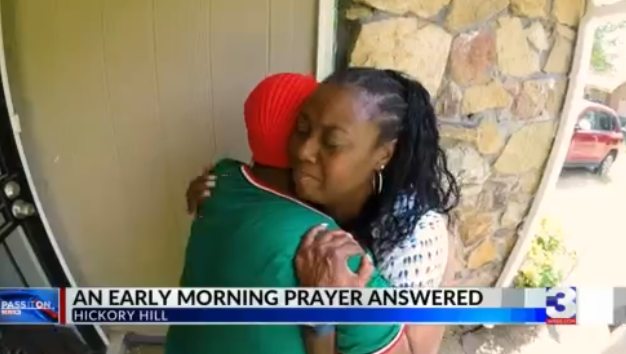BIRMINGHAM, Ala. — The Southeastern Conference released its health and safety guidelines for fans attending football games this season, on Tuesday.
The conference left it up to the discretion regarding stadium attendance to the 14 institutions across the league, as they get ready to kick-off their season on Sept. 26. SEC commissioner Greg Sankey said in a press release that local and state guidelines will determine how many fans can attend games, but the guidelines will “provide conference-wide expectations for protection of guests who are able to attend our games.”
According to the guidelines, each university will decide stadium capacity following local and state policies and regulations, but if there are not any protocols set on the local level, the schools must use the CDC’s recommendation on social distancing.
Additionally, the SEC said it is up to the institutions to determine whether they will permit things like tailgating, fan attendance for tam walks, or large gatherings on school property. The only requirement is each school must follow the local recommendations as it relates to the aforementioned.
Along with Tennessee Gov. Bill Lee, University of Tennessee-Knoxville athletic director Phillip Fulmer spoke about how that program will approach the upcoming football season.
“Attendance this fall is one of the discussions that constantly comes up,” Fulmer said. “We’re grateful for our good friends at Bristol (Connecticut), and the efforts they made to again pave the way to some degree for what we’re getting ready to do but obviously, whatever happens, it is clear that capacity in Neyland Stadium will be reduced if we get to start on time. Or, if it is a later date in the fall or next spring because of social distancing,” Fulmer said referencing ESPN.
“We are anticipating somewhere around the 25 percent mark and we hope to be able to achieve that,” Fulmer said.
Below is a full list of guidelines and recommendations given by the SEC:
Attendance
- Institutions shall determine the number of guests permitted to attend in accordance with applicable state and local guidelines, policies and/or regulations. In the absence of state and/or local guidelines, policies and/or regulations, the Centers for Disease Control and Prevention recommendations on physical distancing should be applied.
Face Coverings
- Face coverings, over the nose and mouth, shall be required as a condition of all guest ingress, egress, and movement throughout the stadium, as well as any time guests are unable to maintain the recommended physical distance from others who are not in their same household.
- Stadium workers and athletics staff should wear face coverings at all times.
Food, Beverage and Merchandise
- Barriers, e.g., plexiglass, shall be installed at all points-of-sale or otherwise all concessions staff shall wear a face shield plus a mask.
- Queuing lines at points-of-sale shall permit physical distancing between guests.
- “Grab and go” food/beverage options should be considered at points-of-sale locations.
- Beverages shall be provided directly to guests. Machines designed to allow guests to fill or refill beverages must remain inoperable.
- Condiments shall be offered only as single-serve condiments, and condiment carts shall be prohibited.
- All portable points-of-sale locations shall be strategically placed to ensure physical distancing is permitted between guests who are in line or may be in close proximity to the selling location for other purposes.
Gate Ingress/Egress
- Signage shall be installed at parking lots, pedestrian paths to the stadium, gates and/or other ingress/entry points that outlines mandates for all guests to wear face coverings, maintain physical distancing and mandates guests do not enter the stadium if they display any COVID-19 symptoms as outlined by the CDC.
- All tickets shall be digitally scanned.
- The footprint at all gates and ingress/entry and egress/exit points shall permit physical distancing between guests.
Guest Shuttles
- Institutions that cooperate with and/or arrange for shuttles to transport guests to/from the stadium shall ensure the shuttle operator has sufficient protocols/procedures in place including, but not limited to, the following:
- Maintaining physical distancing while guests are on the shuttle, entering/exiting the shuttle and while waiting in lines to board the shuttle;
- Requiring face coverings as a condition for shuttle usage for drivers and guests at all times while aboard the shuttle, entering/exiting and while waiting in line; and
- Planning to sufficiently and regularly disinfect the shuttle.
Plans for Disinfection, Symptomatic Guests, Communication/Public Relations and American with Disabilities Act
- Institutions shall have a documented plan that outlines the procedures/protocol for appropriate disinfection of the stadium.
- Institutions shall have a documented plan that outlines the procedures/protocol for working with guests who exhibit COVID-19 symptoms.
- Institutions shall launch a communication/public relations campaign for communicating all COVID-19 procedures/protocol to prospective guests.
- Institutions shall ensure they comply with the Americans with Disabilities Act in the development and implementation of all procedures/protocols.
Premium Seating – Suites and Clubs
- “Suite hopping” shall be prohibited.
- Sufficient signage that promotes and instructs suite holders to wear face coverings and maintain physical distancing shall be installed near ingress/entry points.
- Furniture shall be arranged in clubs to promote physical distancing.
- Each suite and club shall be supplied with sufficient hand washing and/or hand sanitizing stations.
- Guests shall be permitted to access “field level” suites or clubs that are not within six feet (6′) of any team area. Additionally, institutions must ensure guests do not access a pathway to enter or exit a “field level” suite or club at the same time a student-athlete, coach, team staff member, game official or other game participant is utilizing the same pathway.
Public Areas Inside Stadium
- Institutions shall ensure the set-up and operational procedures in all areas accessed by guests permit physical distancing including, but not limited to, the following areas:
- Guest Seating
- Concourses and Gathering Places
- Dining Areas (high top tables, extended countertops, etc.)
- Concessions Sales
- Merchandise Sales
- Restrooms
- Elevators
- Escalators
- Sufficient signage that promotes and instructs guests to wear face coverings and maintain physical distancing shall be in place in areas accessed by guests.
- Signage must specify the maximum number of guests who may be inside an elevator simultaneously at each elevator entry point (elevator operators shall wear face coverings).
- The usage of traditional water fountains or other apparatuses providing drinking water shall be prohibited and all must be clearly marked or covered to indicate its use is prohibited. This does not apply to apparatuses that use touchless technology.
- Sufficient hand washing and/or hand sanitizing stations should be present throughout the stadium.
Restrooms
- Entry and exit points shall be clearly designated, and sufficient signage shall be in place to assist with traffic flow and promote physical distancing.
- Institutions shall implement measures that promote physical distancing, reduce touch points and/or assist with minimizing the spread of COVID-19 including, but not limited to, the following:
- Installing additional hand sanitizer and hand soap dispensers; and
- Leaving doors open at entry/exit points.
Tailgating
- Institutions shall determine whether tailgating or other large gatherings of guests (e.g., alumni events, university recruiting events, etc.) are permitted on property owned and/or controlled by the institution in accordance with applicable state and local guidelines, policies and/or regulations. In the absence of state and/or local guidelines, CDC recommendations on physical distancing should be applied.
- Considerations should be given as to the time parking lots open.
Team Walks
- Institutions shall determine whether team walks are permitted in accordance with applicable state and local guidelines, policies and/or regulations.
- If permitted, all institutional personnel (e.g., student-athletes, coaches, team staff, athletic department staff, etc.) and guests in attendance shall wear face coverings.
- If permitted, institutions shall ensure recommended physical distancing exists and may be maintained at all times between walk participants and guests. Team walks shall be prohibited if physical distancing cannot be implemented during its entirety.
Caleb Wethington of WATE-TV (Knoxville) contributed to this story
- Trump ordered to give some Venezuelans 21 days notice before deportations
- Overton Park Shell reveals free concert series lineup
- Operation Babylift crash survivor still searching for answers 50 years later
- POW who shared cell with McCain recounts six-year ordeal
- Memphis’ new “Pre-K for All” plan explained


























